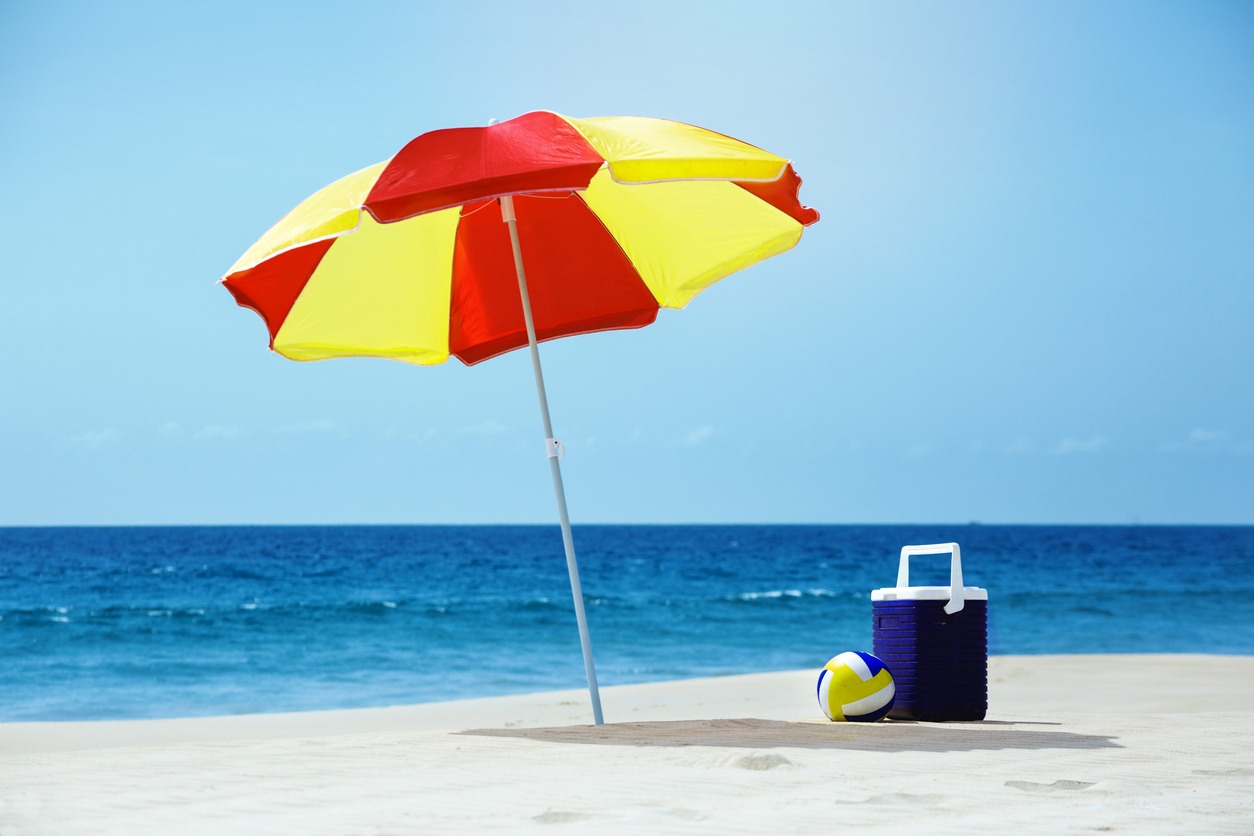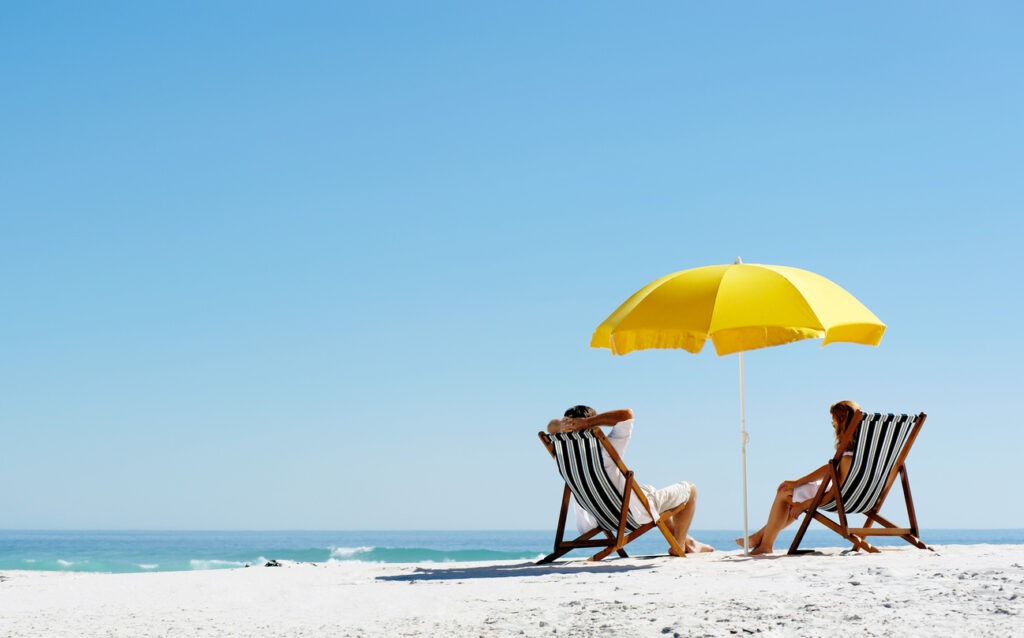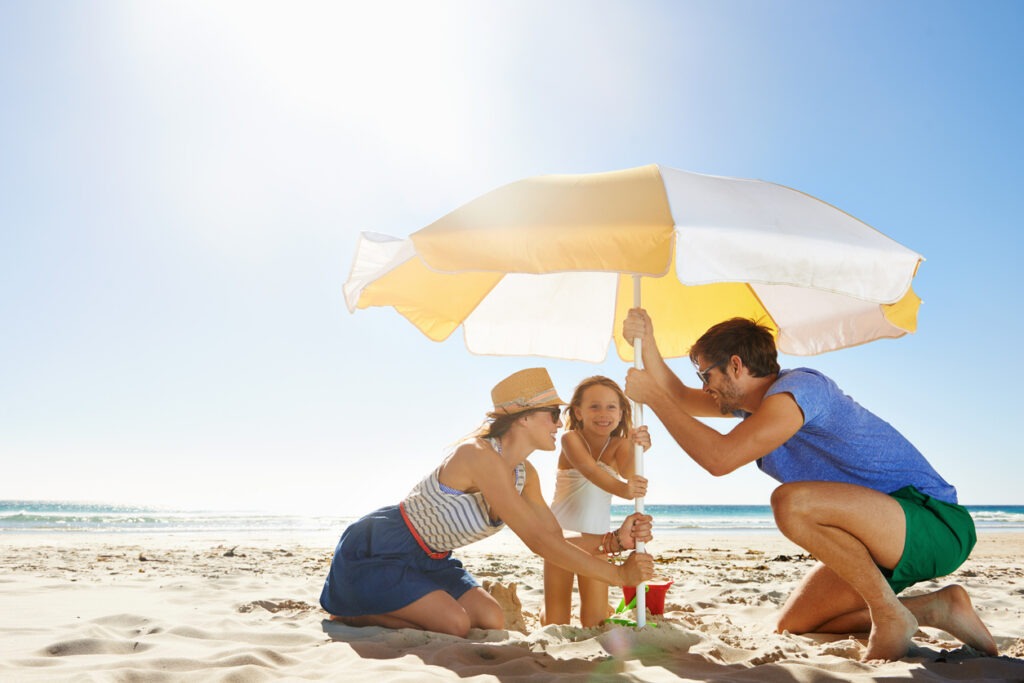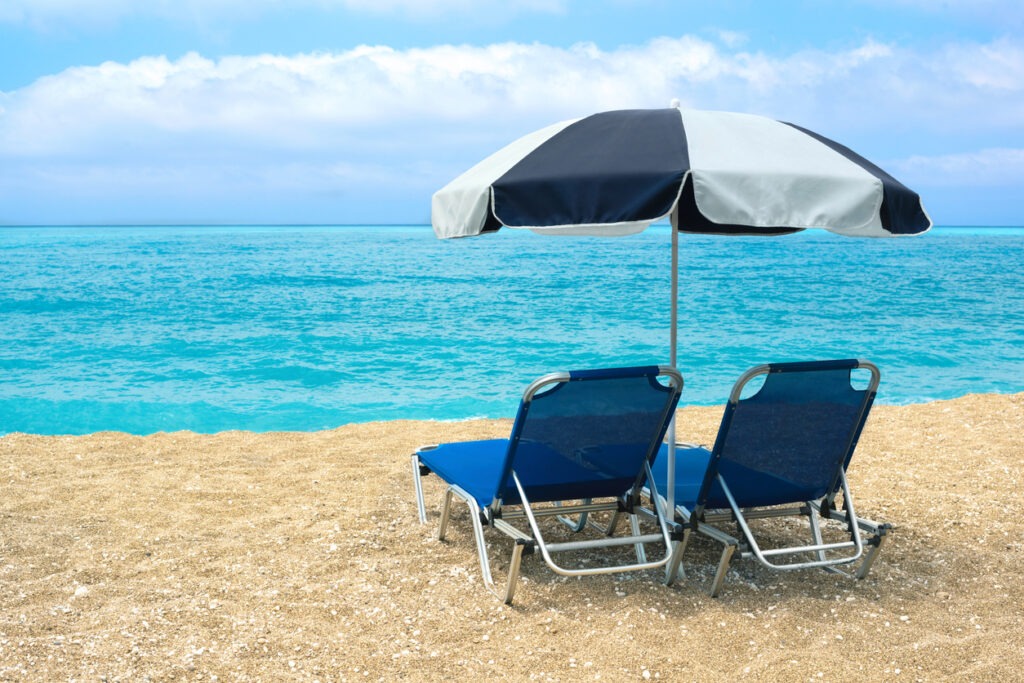A great addition to any relaxing day on the sand is a beach umbrella, as not only do they offer shade but also add to the atmosphere of a sunny beach vacation. Whether you plan to go alone or with friends, protect yourself from the sun’s rays by investing in a quality beach umbrella. But before you buy one, there are some important factors to consider regarding size, material and ease of setup.
Things to Remember When Buying a Beach Umbrella
Size
Typically, beach umbrellas measure 6 to 7 feet in diameter, although they can range anywhere from 4 to 9 feet depending on your needs. Larger umbrellas are ideal for providing shade over an entire family or larger group of people and come with additional features like wind vents that allow the umbrella to hold its shape in breezy conditions. On the other hand, smaller umbrellas are best suited for personal use when portability is a factor.
Ease of Use
When assessing an umbrella’s ease of use, consider set up and takedown, as well as its portability and stability. Ease of setup is closely related to portability, since heavier umbrellas may require more time or additional help with set up and takedown.
Sun Protection
In terms of sun protection, look for a beach umbrella that not only provides ample coverage, but also one that is made of UPF 50+ fabric; this means it has been tested and approved to block 98% of the sun’s harmful UV rays.
Air vents
Another overlooked feature of some umbrellas is their air vents. Having a beach umbrella with air vents helps to keep the fabric from taking flight, even in high winds. Most good quality beach umbrellas come with built-in air vents, allowing them to easily cover and uncover without having to fight the wind or adjust constantly.
Accessories
Accessories that come with beach umbrellas can be both useful and decorative, including locking mechanisms, sand anchors, and carrying bags. Locking mechanisms allow you to keep your umbrella more secure when left unattended. Sand anchors help keep your umbrella in place, even in windy conditions. Carrying bags make it much easier to transport items to and from the beach.
Internal Pockets
Some beach umbrellas come with internal pockets that provide the space to keep small items such as wallets and phones safe from sand and water. Not only do these pockets offer additional storage, but they also work wonders for keeping your hands free for fun beach activities.
It’s important to remember that this type of pocket is intended for lightweight items as too much weight might damage the umbrella, so best to stick with small items like keys or sunscreen.
Does it Tilt?
Being able to adjust the angle lets you create shade in any direction, so you can block sunlight no matter where it’s coming from and keep your family safe from UV rays. Different beach umbrellas offer different levels of adjustability – some tilt manually, but many have built-in mechanisms that let you adjust with minimal effort.
While some non-tilt models are still effective in providing shade, tilt umbrellas give you the ability to adjust where the shade falls as your needs change throughout the day.
Tent Design
Many beach umbrellas today come with a ‘tent’ design—a unique structure made up of fabric, and sometimes a flexible set of poles and canvas attached to one end that acts as an additional layer of protection from the sun’s rays. The ‘tent’ design allows for ample ventilation beneath and around the umbrella, providing comfort and proper airflow in hot temperatures.
These types of umbrellas are lightweight, making them easy to transport from home to the beach and move around as needed throughout your stay. Due to their flexibility, these umbrellas also come in various sizes so that even large groups can enjoy some shaded respite from the sun during their outing.
Number of People It can Accommodate
Size and shape play an important role in determining how many people can comfortably fit under the beach umbrella. A larger size with a six-foot diameter is often ideal for up to five people or if you need more space, look for a nine-foot diameter with some options extending up to eleven feet.
It is also important to pay attention to the construction of the beach umbrella pole; circular poles wider at the base typically provide better stability and can accommodate more people depending on the model. When selecting a beach umbrella that’s right for your group, take into account the way it opens, extends or retracts so you don’t have to scramble over each other after installation.
Stability
An important feature to look for in a beach umbrella is a wide base, as this will ensure that it can anchor into the sand securely, preventing it from collapsing or flipping over in gusts of wind. Sand anchors are also effective at keeping your beach umbrella stable, as they are designed to be inserted deep into the ground and can add extra resistance against strong winds.
Carry Bag
Make sure you choose an umbrella with a good carry bag; this will make packing up and transporting the umbrella a breeze. Look for bags that have straps so you can easily tote it around. For added convenience, see if there’s a pocket for your phone, wallet or sunscreen.
Pole Material
Aluminum poles are lightweight yet durable and resistant to bending or breaking in windy conditions. Steel is stronger and more weather-resistant than aluminum, but it will add a lot of weight to your umbrella. Fiberglass poles have superior flexibility meaning they can bend when exposed to high winds instead of being damaged or breaking completely like steel poles can.
Finally, wood poles provide a classic look but require regular maintenance to preserve their strength, something that may not be practical for those planning on visiting the beach frequently.
Value for Money
When choosing an umbrella, it’s important to consider both quality and value for money. Investing in a higher quality umbrella will ensure that it stands up to weather conditions and other potential wear-and-tear.
Look for umbrellas made with good materials such as polyester or spun acrylic fabrics, which are resistant to mold, mildew and the harsh direct sunlight of summer days. Strong ribs, fiberglass spines, non-rusting poles and tilting mechanisms also add to the longevity of beach umbrellas.
Final word
Buying a beach umbrella can be a great way to protect yourself from the sun’s rays while also creating an enjoyable spot for a day by the seaside. Try to find a balance between price and features such as UV protection, windproof reinforcements, special pole and fabric technology as well as convenient accessibility – all factors that can significantly enhance your experience at the beach.



